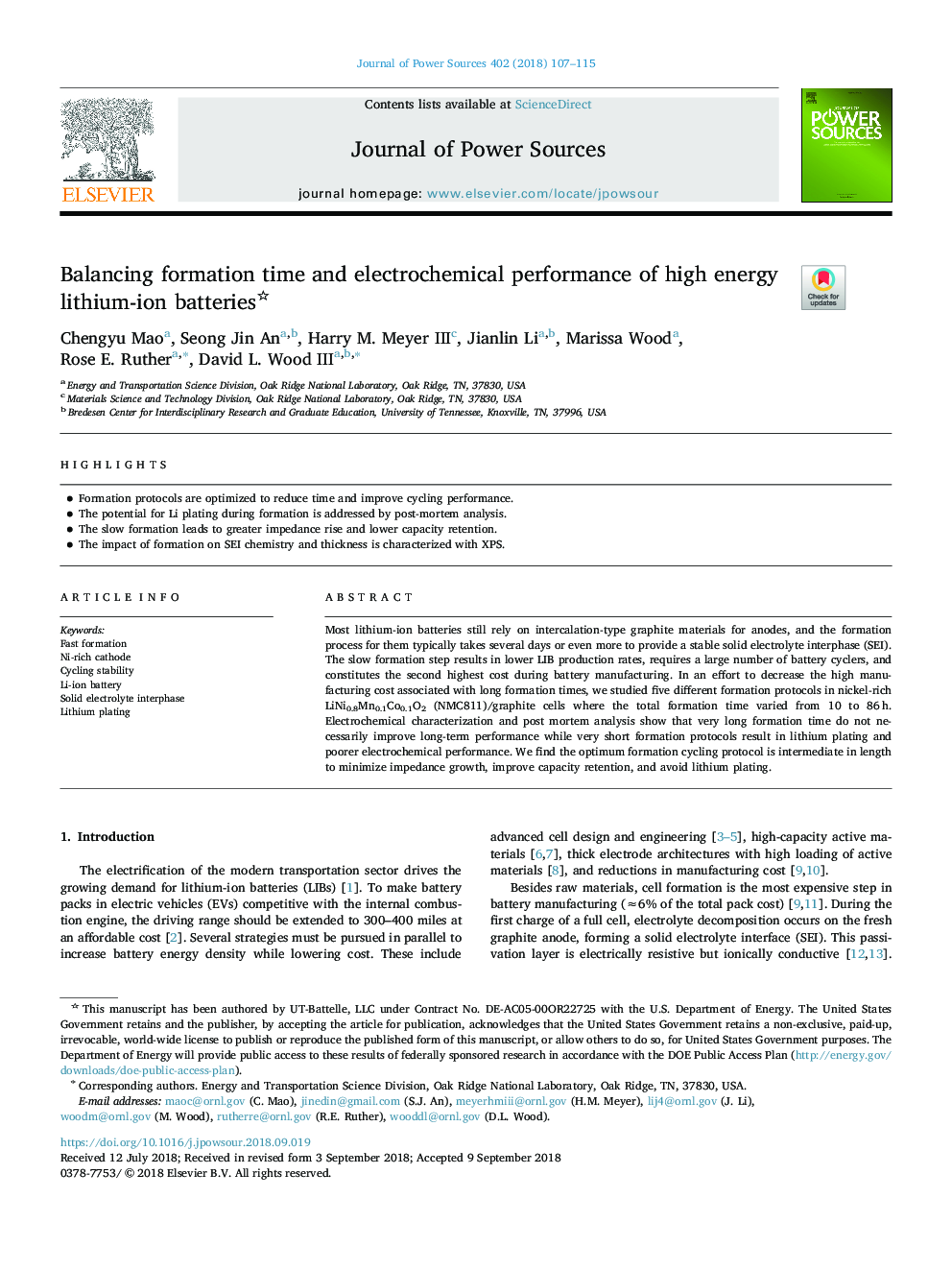| Article ID | Journal | Published Year | Pages | File Type |
|---|---|---|---|---|
| 10154681 | Journal of Power Sources | 2018 | 9 Pages |
Abstract
Most lithium-ion batteries still rely on intercalation-type graphite materials for anodes, and the formation process for them typically takes several days or even more to provide a stable solid electrolyte interphase (SEI). The slow formation step results in lower LIB production rates, requires a large number of battery cyclers, and constitutes the second highest cost during battery manufacturing. In an effort to decrease the high manufacturing cost associated with long formation times, we studied five different formation protocols in nickel-rich LiNi0.8Mn0.1Co0.1O2 (NMC811)/graphite cells where the total formation time varied from 10 to 86â¯h. Electrochemical characterization and post mortem analysis show that very long formation time do not necessarily improve long-term performance while very short formation protocols result in lithium plating and poorer electrochemical performance. We find the optimum formation cycling protocol is intermediate in length to minimize impedance growth, improve capacity retention, and avoid lithium plating.
Related Topics
Physical Sciences and Engineering
Chemistry
Electrochemistry
Authors
Chengyu Mao, Seong Jin An, Harry M. III, Jianlin Li, Marissa Wood, Rose E. Ruther, David L. III,
